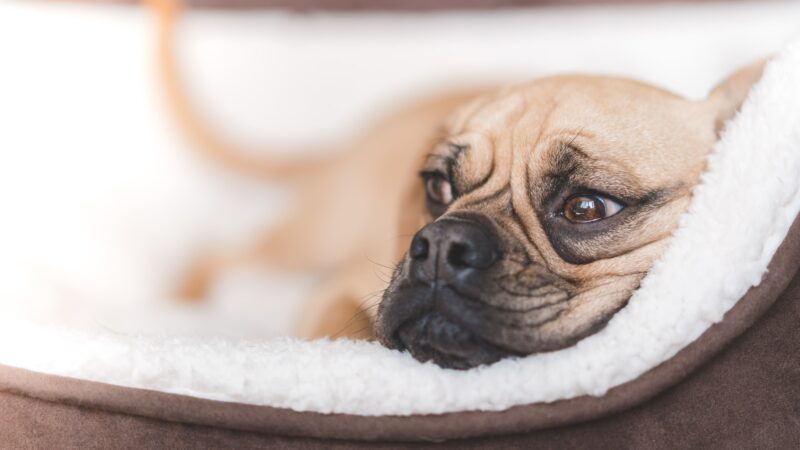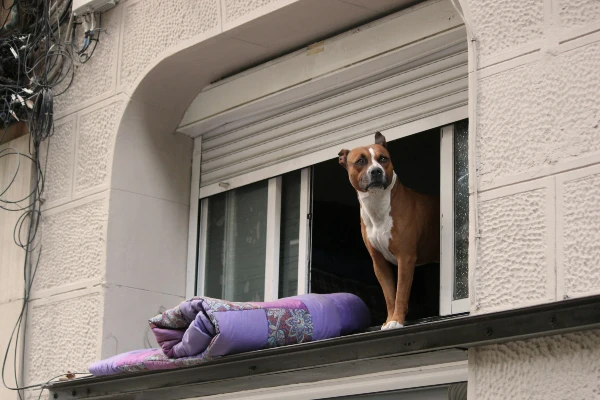Disclosure: This post may contain affiliate links, meaning we get a commission if you decide to make a purchase through our links, at no cost to you. Please read our disclosure for more info.
Dogs are active animals. They love sniffing, playing, and exploring, but they also need to take a rest. Undoubtedly, dogs can sleep on the floor, sofa, on your carpet, or even in your bed. Yet, every canine pet deserves a place for them to rest because dogs spend about 12 to almost 24 hours of sleep every day.
A right dog bed can offer that perfect, cozy, and quiet spot for any pup. In addition to placing a stylish effect on your home décor, a dog bed can provide loads of benefits not just for your pet but for you as well. Some of the reasons why your dog deserves a bed of his own:
- Any specially designed dog bed can provide your puppy with a soft and warm place to slumber his joints after a day of activity. It can offer cushioning and insulation against the cold hard floor. Not to mention, as dogs move to their senior years, this is also essential.
- A dog bed can also provide privacy, security, and personal space for your beloved four-legged companion. Canine’s wild ancestors are territorial, so your dog will appreciate it if he has a special place to claim as his own.
- Giving your dog a bed to sleep on can also secure your home. It can keep his fur, dirt, or him to dander off your furniture and your bed. It can also protect your family members if they have allergies.
Just like us, dogs have their preferences when it comes to a comfortable place to catch their sleep. So, before you buy your furry friend his very own bed, you should first consider the following variables.
In This Post:
Things to Consider When Choosing A Dog Bed
Size of Your Dog
The first step to consider is to decide on the right size bed for your dog. Choosing the wrong size bed may lead to potential issues like sore joints and muscles, not enough restful sleep, and hip and back problems. Selecting the correct bed size, on the other hand, will ensure that they have plenty of room to stretch out, to get enough support, and to be comfortable.
To do this, make sure to measure the length and width of your dog correctly. The length should be measured from the nose’s tip to the tail base with an added allowance of 6″–12″. Measure the width from shoulder to shoulder at the widest point and add another 6″–12″ to the final number to ensure that your dog has enough space to move around. A dog’s weight can also determine many dog beds sizes. However, it’s still best to check the bed measurements to ascertain that it is snuggly for your pet.
Sleeping Habits
Another factor to consider when choosing a comfortable dog bed for your dog is recognizing his sleeping style. How your dog prefers to sleep can influence how much space they have. Many dogs sleep in multiple ways, so make sure the bed you end up with is spacious enough to accommodate all.
- Sprawlers – Tends to like to stretch out in all directions. These doggies prefer to take up lots of room and want to use the entire surface of the bed. They can find themselves in the most hilarious of sleeping positions. The right mattress for these dogs is a roomy pad or a rectangular pillow bed.
- Curlers – This is a typical sleeping style for dogs when they like to curl up to go to sleep. They prefer the comfort of curling as it is a remnant of the pack mentality. Dogs used to curl up in a ball to provide warmth, conserve body heat and protect their vital organs from predators. Dogs who love to fall asleep in this ball position may prefer a smaller, round, oval, or bolster bed.
- Burrowers – These dogs love to dig in and go under the covers. Burrowers prefer to make a cozy nest, creating that cave feel. They often sleep right next to you in the bed and burrow under the blankets. The right type of bed for these styles are domed or hooded dog beds.
- Leaners – Leaners favor having their heads leaning against something and enjoy the feeling of support, making bolster beds the best option for this sleeping habit. You can also choose a dog sofa for them.
Age and Health
Considering your dog’s age and health will also influence the bed’s style and size that you will purchase for your puppy. If your pet is a senior dog or has joint issues, you may want to get a more extensive and spacious bed for them to stretch out and find a cozy spot for them to nap.
What Are the Different Types of Dog Beds?
Pillow or Cushion Dog Bed
This is one of the basic dog beds that is simply a large cushion or a fluffy pillow. This type of bed comes in various designs, sizes, colors. And an excellent choice for canine pets that love to sprawl out. However, this may not be the ideal bed for your dog due to certain downsides such as offering no support on your dog’s joints, it traps heat as your dog lies on it, they’re difficult to clean, and they don’t last long.
Bolster Dog Bed
Bolster dog beds are just the right bed for any size dog who loves to lean against something when they are sleeping. With its built-in support on each side, dogs can stretch out, lay on their side, or curl up. A Bolster dog bed, which is usually round or oval, can also provide a naturally comfortable position, offer the feeling of security and give your pooch the same kind of buttress when your lap is unavailable–which makes dogs love this type of bed.
Orthopedic Dog Bed
As the name suggests, this kind of dog bed is typically a mattress that provides orthopedic support. Getting your dog an orthopedic dog bed can provide him with many benefits such as prolonging healthy joints and is convenient for dogs who have arthritis, hip dysplasia, joint problems, bone or soft tissue injuries. It is also the right choice for skinny or lean breeds and older dogs. If you want to know more about orthopedic dog beds, you can check out these shopping guides for dogs to help you out.
Temperature-Controlled Dog Bed
This type of dog bed is excellent for use in either warm or cold environments. A heated dog bed, for example, is cozy and warm that is also beneficial for older dogs. Moreover, it is suitable for smaller dogs as they quickly lose body heat. It gently soothes and reduces stiffness, which is perfect for dogs suffering from painful joints.
Opposite to this kind of dog bed is a dog cooling bed. This type of dog bed is also suitable for senior dogs as it provides a lot of upsides for your pooch, such as avoiding dehydration, allowing proper sleep, reduces shedding, keeps your dog clean, prevents cold as well as making your pup feel good.
Elevated or Raised Dog Bed
Another type of dog bed appropriate for older canine pets is an elevated or raised dog bed. It is applicable for dogs with mobility issues as it makes it easier for them to get in and out of their dog bed. It can also help with temperature control, plus they’re portable. This kind of mattress is usually outside to keep your pooch off the warm ground.
Memory Foam Dog Beds
Memory foam dog beds are soft and supportive. It’s not just humans who like to feel comfortable when we sleep. These bed use memory foam to accommodate all manner of curves and bumps to relieve pressure on sore doggy joints. Sign up to the Sleep Republic newsletter for $20 off any Pillow, Protector, Sheets and memory foam dog bed!
Final Thoughts
While many of us love to snuggle with our furry pooch and share our beds with them, sleeping with your dog can lead to a poor night’s rest for you. A disruptive night’s rest can affect your mood and can lead to less productivity the following day. That’s why it’s also necessary for him to have his very own place to sleep and note the information above. Besides, we don’t want to experience buying a cute dog bed for your pooch only to discover that he wants to lie anywhere but there. It’s also crucial to consult your dog’s vet to help you decide on the best dog bed suited for your pet.



